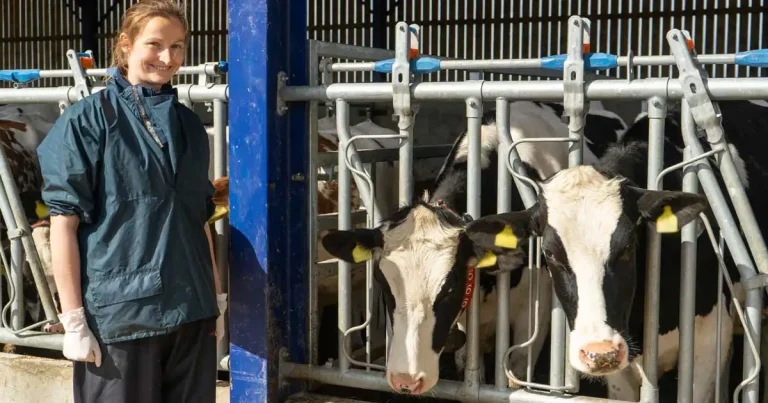9 Jun 2025
Vet group VetPartners carried out audit involving 347 farm clients and 25 of its practices, revealing feto-maternal disproportion size of calves is the primary reason for the procedures.

Mel Julian, farm vet at Cross Counties Farm Vets.
A first-ever audit of more than 600 cattle caesarean sections on UK farms has found feto-maternal disproportion size of calves is the primary reason for the procedures.
Findings from the VetPartners Cow Caesar audit could provide a baseline of data to aid wider farm management and veterinary decisions.
The audit, which is ongoing, covered 347 farm clients and 25 of the group’s farm practices across the UK, and is part of a wider quality improvement project. Data is submitted via farm vets who are asked to complete a survey after performing a caesarean, with them asked how they performed the surgery, use of medication and information on the dam.
Beef and dairy caesarean section success rates are collected, along with survival at time of surgery and at 7 and 60-days post-procedure, to assess both short-term and long-term recovery of cows and calves.
Andrew Henderson, chair of the VetPartners Farm Animal Clinical Board (FACB), who is a clinical director and RCVS recognised specialist at VetPartners’ LLM Farm Vets, said the audit’s results would help inform decision-making and benchmarking.
He said: “This is the first audit of this scale in the UK and will be an important data set to inform change and develop protocols, if they are needed, on both an individual practice, group or national basis.
“Not only will this data tell us the reason for caesarean sections in the first place, but it also means we can understand how and which antibiotics are used, the extent of pain relief administration, and set a baseline for how a significant proportion of farm vets in the UK perform this procedure.”
Mr Henderson said the audit would benefit all farm vets, farmers and cattle breeders, stating the learnings were representative of UK farms.
Mel Julian, a member of the FACB and a farm vet at Cross Counties Farm Vets – also in the VetPartners group – said: “In addition to responsible breeding, the audit highlighted that a halter was used for restraint of 29% of dams during the procedure.
“For the safety of both farmers and vets during the procedure and around calving assistance suitable restraint and handling methods should be considered and implemented.”
Further data and insights will be shared as the audit continues. Existing data is available online.